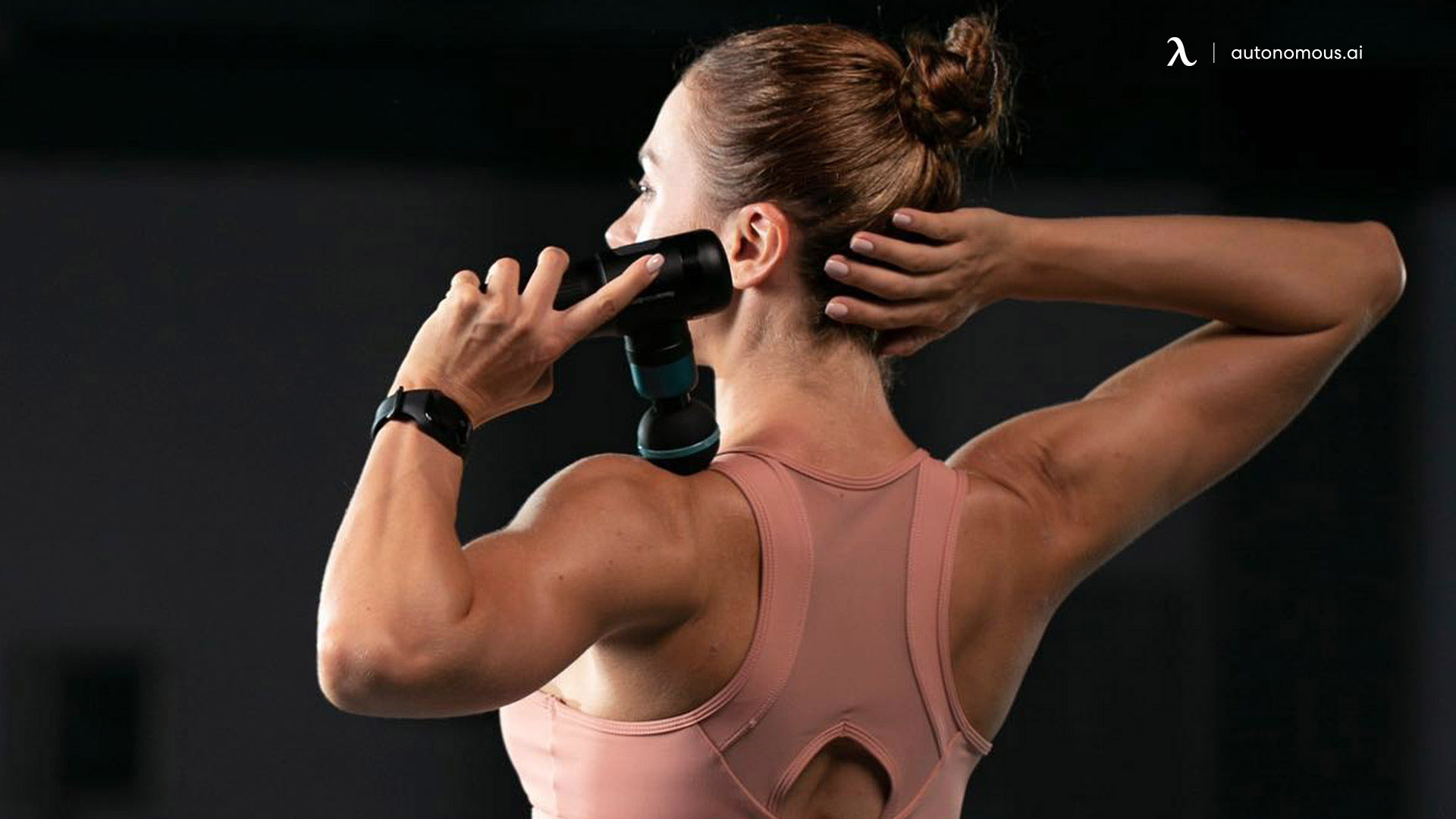
Work Trends: Is Floor Sitting Bad or Beneficial for Ergonomics?
Table of Contents
There are a lot of trends in ergonomic sitting popping up, partially because of the popularity of flexible offices and the new push for working from home. We can all universally agree that sitting in a recliner or on the couch all day, especially if you’re working at a computer, is a bad idea. What people disagree on is what the proper ergonomic position is.
- Do you go with the traditional triple-90 posture, with feet flat on the floor, knees bent at 90-degrees, and waist bent at 90-degrees for a straight vertical back?
- Do you go with a semi-reclined, supported position with a 135-degree angle at your waist, head supported by a headrest, giving you a better back posture but more stress on arms and neck?
- Do you eschew a chair back altogether, replacing your chair with a stool or a yoga ball, so you can practice active sitting to build up core muscles and reduce back pain?
- Do you get rid of the chair entirely, replace your desk with a standing desk, and go through your workday on your feet?
Then you have a new trend. Do you sit on the floor?
Floor Sitting: A New Old Practice
Sitting on the floor, or more often, on the ground, is nothing new. Cultures have sat on the ground since antiquity, and some of them have maintained the tradition either in ceremonial contexts or just as part of daily life ever since. There are all manner of ways you can sit on the floor, but are they ergonomic? Or will you end up doing more harm than good?
There are even a variety of different positions you can take on the floor. You can squat, perching yourself on a small stool, pillow, or bucket. You can kneel, putting your weight on your heels as much as anywhere. You can sit “Indian style”, with a cross-legged posture, also known as “Turkish style” or even “Yangban style” depending on where you’re from. There’s even the familiar yoga pose called the Lotus, which doesn’t just let you sit but helps your flexibility as well.
The only question is, are there any benefits to sitting like this, or are you just going to hurt yourself if you try it?
Possible Benefits of Floor Sitting
The truth is, there are some potential benefits to sitting on the floor, though they might not be what you expect. They’re also dependent on a few factors, and there are drawbacks, which you’ll see in the subsequent section.
It Can improve Circulation
One of the risk factors with sitting for long periods is that pressure points, particularly on your back, neck, and thighs, can cut off circulation to parts of your body.
This lack of circulation can damage your entire circulatory system, from your heart that has to work harder to pump blood through cut-off flesh, to your vessels in your legs, which can become more prone to clotting. The medical condition Deep Vein Thrombosis is one possible result, and it can be very damaging to the body if you get it.
It May Improve Posture
A key element to sitting comfortably on the floor is maintaining an upright posture for your back, with the proper curvature to your spine. We’ll talk more about the spinal curvature in a moment. For now, posture. Much like active sitting, sitting on the floor requires constant small adjustments to the way you’re sitting, unless you’re leaning back against something. You should avoid leaning, for the same reasons you should avoid it during active sitting; it lets some of your back muscles lock up. When you sit on the floor, or when you sit on a stool with no back, your back is forced to make constant adjustments to stay balanced. These constant adjustments help build core muscle strength, reduce back pain, and build proper posture in your back and shoulders.
The caveat here is that you do, as mentioned, need to sit without a backing on your chair. This doesn’t work if you’re stretching your legs out and leaning against a surface; it only works when you’re kneeling or sitting cross-legged.
It Can Be Relaxing
Particularly when you’re working from home, it can be stressful to force yourself to sit or stand at a traditional desk with a traditional office space. If you can, it’s often better and more relaxing to spend time in a more comfortable and familiar environment. This added comfort can help you live a little bit more stress-free.
This benefit only works, however, if you’re naturally used to enjoying time spent sitting on the floor with a computer. If you’re stressing your body with aches and pains, or if you’re struggling to get work done without a more rigid office structure, the posture won’t help much at all.
It Can Aid Digestion
This one comes straight from the yoga pose. Sitting on the floor in a lotus position has been observed to help with digestion, as it helps your bowels exist and move without compressing or creasing any part of them. This can help you with your energy levels, your daily hunger cravings, and a variety of other issues that stem from improper digestion. Of course, very little scientific study has gone into proving this benefit, so it’s more anecdotal than evidential.
It Can Encourage Spinal Curvature
The natural curve of your spine is traditionally supported by your chair’s back, and without a chair, it’s supported solely by your Musculoskeletal system. Sometimes, a traditional chair can encourage a pelvic tilt that hurts your spine by leaning you too far forward or back. While this can usually be adjusted by fixing the position of your lumbar support, there’s only so much you can do if your chair itself encourages negative positioning.
These are just some of the potential benefits of floor sitting. Keep in mind, though, that these are only benefitting so long as you’re sitting in a good posture, so it doesn’t work if you’re propping yourself up on a floor chair, leaning back with legs outstretched, or otherwise not sitting in a good posture.
The Downsides to Floor Sitting
Despite all of the potential benefits we’ve listed above, the truth is, sitting on the floor hasn’t been studied all that well over the years and the studies that do exist indicate some severe risks. There are tangible drawbacks to floor sitting, and you have to keep them in mind if you’re going to try it out.
It Can Cause Back Pain
As much as proper posture and a strong core can alleviate some kinds of back pain, sitting in an odd position can cause it. In particular, two kinds of pain crop up with floor sitting. First is upper back and neck pain, largely caused when you don’t have a properly adjusted desk or work surface, so you end up leaning over or hunching over the objects you’re working on.
The other is lower back pain, primarily caused by hunching your back, leaning with no support, or otherwise putting twists and torsion on your spine that shouldn’t normally be there. Usually, this is muscle pain, but if you persist with the kind of sitting that causes it, you’re as likely as not to end up causing yourself even more pain through slipped or herniated discs that could even require surgery to correct.
It Can Cut Off Circulation to the Legs and Feet
Sitting on your legs or kneeling can cut off circulation. Yes, that’s right; better circulation and worse circulation are both true with floor sitting. In part, this depends on your posture. A cross-legged position isn’t going to cut off circulation nearly as much as a kneeling position will. This can also be dependent on your weight. Overweight and obese people find it harder to sit comfortably, and will put more pressure on more flesh that cuts off more circulation, and leads to more pain. Unfortunately, floor sitting is largely only possible for the young and hale.
It Can Stress Hip Joints
This one applies more to cross-legged and lotus pose sitting than with kneeling. Sitting with your legs spread at the hips will put stress on those hip joints. They can begin to ache, and the ache can exacerbate other hip issues you may have. The last thing you need to force yourself through is a hip replacement, after all.
Unfortunately, the drawbacks are often worse than the benefits you get from floor sitting. If you absolutely must sit on the floor, do so safely, and try not to stay there for too long at once. Otherwise, leave sitting on the floor to your children; you deserve a chair.

What Should You Do?
Given the risks of floor sitting, there’s one thing that stands out above all of the rest: the need to keep moving.
Let’s face it; sitting on an ergonomic office chair for eight hours a day is just as dangerous as sitting on the floor for eight hours, or standing for eight hours. Anything you do, if you do it for long enough without moving, is going to hurt your body. Your muscles will lock up, your bones and joints will become aggravated, and you’ll generally end up in worse shape than when you started.
So what should you do?
Keep moving.
The best thing you can do is a transition between several different positions throughout the day. Our general recommendation is to transition between sitting and standing, and that applies whether you’re active sitting on a stool, sitting on an ergonomic chair, or sitting on the floor. Every hour or so, you should transition between postures, to keep your body from falling into any of the risks of any one position held too long.
Normally, we recommend using an ergonomic chair or an ergonomic stool, coupled with a standing desk. If you’re looking to add floor sitting into your routine, you certainly can but there’s just one major roadblock.
That roadblock is the lack of floor-eight desks available to you. Unfortunately, no standing desk on the market can sink low enough to be viable for floor sitting. You need something like a laptop tray or a coffee table to use as your floor sitting desk, and that only works if you use a laptop. If you’re using to using multiple monitors on a desktop environment with a large PC, this won’t be easy or convenient to set up.
Our best recommendation is to abstain from floor sitting outside of actively practicing yoga, playing with children, or otherwise doing some kind of floor-based activity. Sitting on the floor for office work isn’t valuable enough to be worth buying entirely new furniture, compared to simply buying a standing desk and transitioning between sitting and standing.
If you’re determined to sit on the floor, we won’t stop you. Our recommendation is to sit cross-legged or in the yoga pose, but make sure to stretch your legs frequently. You don’t want to injure your hips, nor do you want to cut off circulation to your legs with a kneeling pose, or put stress on your lower back with a legs outstretched post. Really, though, the number one thing you can do to keep sitting well on the floor is keep moving. Never maintain one pose long enough that it starts to ache.
You may also consider some accessories for sitting on the floor. Avoid any backrests; you aggravate your muscles if you’re not using them. What you may want is a traditional kneeling pillow or a small box seat with a cushion to help keep your shins from hurting when you kneel, and to keep your tailbone from hurting when you sit cross-legged.
Additionally, make sure you have some kind of work surface at the proper height. This might mean using a coffee table with a riser for your screen, or even a laptop stand with accessories so you can use the laptop lower than the device itself. A lot of this will depend on what sort of work you need to do, what hardware you need to use, and how portable your existing setup is. Customize it to your needs, but above all else, remember to change positions frequently to avoid hurting yourself.
.svg)







